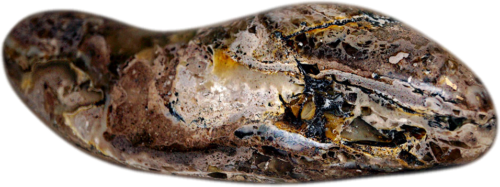


Dimensions: 100 x 33 mm. (through the farthest edges).
About amber: Amber has formed many millions of years ago, when forests were still flourishing in the marine regions. Amber was made up of resin from a tree that would fall to the ground, harden, and turn into amber. Amber has been valued since ancient times for its color, various shapes and natural beauty and does not lose its value even today. Amber comes in a variety of colors. In addition to the usual yellow-orange-brown color that is associated with amber, the amber itself can range from whitish to light yellow, and from brown to almost black. Amber is still used in jewelry and has been used as a healing remedy in folk medicine. Amber is divided into five classes that define the chemical constituents of amber.
Amber inclusions are a variety of insects, flies, mosquitoes, spiders, and even lizards trapped in resins released 50 million years ago. We can also find trapped elements of flora in amber - various pollen, leaves, tree twigs. Each piece of amber with inclusion is a unique archive of natural history. Only 8 percent of the amber found in the world contains an inclusion.